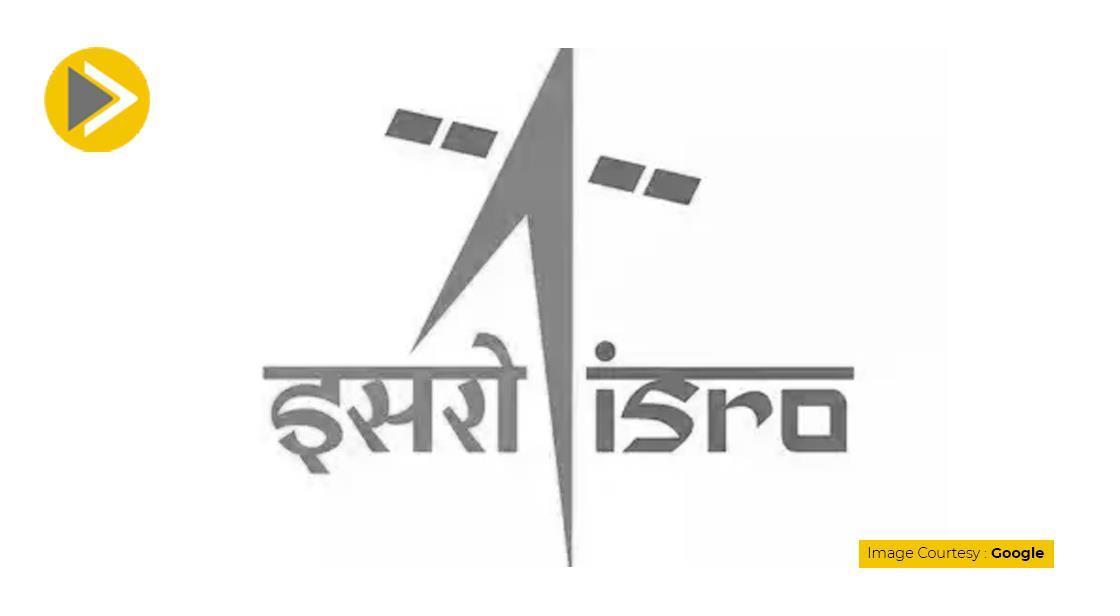ISRO's 24/7 Satellite Surveillance for National Security: ISRO Chairman

News Synopsis
ISRO Chairman V. Narayanan announced that 10 satellites are continuously working round-the-clock for strategic purposes to ensure the safety and security of the country’s citizens. He emphasized the necessity of satellite and drone technology to monitor India's extensive 7,000 km coastline and northern borders, stating, "Without satellite and drone technology, we can’t achieve many things."
Expanding Satellite Applications Beyond Security
ISRO's satellite infrastructure extends its services to various sectors, including agriculture, tele-education, telemedicine, television broadcasting, weather forecasting, environmental monitoring, food security, and strategic sectors. ISRO Chairman V. Narayanan highlighted the critical role satellites play in disaster management and mitigation, noting that advancements have significantly reduced casualties during disasters compared to the past.
India's Milestones in Space Exploration
-
Chandrayaan-1 Mission: India’s Chandrayaan-1 was the pioneering mission that first detected signs of water molecules on the Moon’s surface.
-
International Collaborations: India has launched 433 satellites for 34 countries, showcasing its capabilities as a reliable launch partner.
-
Joint Earth-Imaging Satellite with the US: India and the United States are working together to develop the world’s most advanced Earth observation satellite, which is scheduled to be launched from Indian soil.
India's Progress in Agriculture and Health
Narayanan highlighted India's transformation from importing food in the 1950s and 1960s to now producing over 250 million tons of food and exporting to many countries. He also noted that India ranks in the top five globally for the production of several key commodities such as rice, wheat, maize, horticultural crops, pulses, oilseeds, and cash crops.
Over the past few decades, advancements across various sectors have led to a rise in average life expectancy—from 32 years to 72 years—while both child and maternal mortality rates have seen a significant decline.
Encouraging Scientific Curiosity in the Northeast
To foster curiosity and awareness about space science and technology, Narayanan announced that around 100 science students from each of the eight northeastern states would get an opportunity to visit the ISRO Centre in Bengaluru. He emphasized ISRO's vital role in the development of the northeastern states and its support in implementing various regional projects.
A Vision for India's Future
Narayanan expressed optimism about India's future, stating that before the country celebrates 100 years of independence, it will become a leader in every field and a major contributor to global progress. He urged students to contribute to society after earning their degrees, emphasizing the importance of hard work, smart work, commitment, personal values, self-confidence, and self-motivation.
ISRO History
The Indian Space Research Organisation (ISRO) is India's national space agency, dedicated to the development and application of space technology for national needs. Its journey began with a visionary scientist, Dr. Vikram Sarabhai, who is widely regarded as the father of the Indian space program.
The Early Seeds (1962-1969):
-
INCOSPAR's Formation (1962): Recognizing the immense potential of space technology for national development, India's first Prime Minister, Jawaharlal Nehru, established the Indian National Committee for Space Research (INCOSPAR) in 1962. This was under the Department of Atomic Energy (DAE), and Dr. Vikram Sarabhai was appointed as its chairman.
-
Setting up TERLS (1963): INCOSPAR established the Thumba Equatorial Rocket Launching Station (TERLS) in Thiruvananthapuram (then Trivandrum), Kerala. This strategic location near the magnetic equator was ideal for sounding rocket launches for upper atmospheric research. The first sounding rocket, a Nike-Apache procured from the USA, was launched from TERLS on November 21, 1963, marking the beginning of India's space journey.
-
Building Indigenous Capabilities: Dr. Sarabhai and his team focused on building indigenous capabilities in rocket technology and satellite development. Key infrastructure like the Space Science and Technology Centre (SSTC) in Thiruvananthapuram and the Experimental Satellite Communication Earth Station (ESCES) in Ahmedabad4 were established.
The Birth of ISRO (1969):
-
Formal Establishment: On August 15, 1969, INCOSPAR was transformed and renamed the Indian Space Research Organisation (ISRO). This pivotal moment, under the leadership of Dr. Vikram Sarabhai, marked the institutionalization of space research activities in India with a broader mandate to harness space technology for national development.
-
Established in 1972, the Government of India formed the Space Commission and the Department of Space (DOS), placing ISRO under the administrative control of the DOS. The DOS, reporting directly to the Prime Minister, became the nodal agency for space activities in India, with ISRO as its primary research and development arm.
Early Missions and Technological Development (1970s-1980s):
-
Aryabhata, India’s inaugural satellite, was launched on April 19, 1975, with assistance from the Soviet Union. This indigenously designed and fabricated satellite was a significant step, demonstrating India's capability in satellite technology and conducting experiments in X-ray astronomy, aeronomics, and solar physics.
-
Rohini - First Indian-Launched Satellite (1980): ISRO achieved a major milestone by successfully launching the Rohini-1 satellite on July 18, 1980, using its own indigenously developed launch vehicle, Satellite Launch Vehicle-3 (SLV-3). This made India the seventh nation to achieve orbital launch capability.
-
Developing Launch Vehicle Programs: The 1970s and 1980s saw ISRO focus on developing its own launch vehicles. The SLV-3 program laid the foundation for more advanced rockets. Simultaneously, work began on medium-lift launch vehicles, leading to the development of the Polar Satellite Launch Vehicle (PSLV).
-
INSAT System (1983): The establishment of the Indian National Satellite (INSAT) system in 1983 revolutionized India's communication infrastructure, providing services for telecommunications, television broadcasting, meteorology, and disaster warning.
-
IRS System (1988): ISRO launched its first Indian Remote Sensing Satellite (IRS-1A) in 1988, marking the beginning of a crucial program for resource monitoring and management.
Maturing Capabilities and Landmark Achievements (1990s-2010s):
-
PSLV - The Workhorse (1994): The successful launch of the PSLV in October 1994 marked a turning point. It became a reliable and versatile launch vehicle, capable of launching various satellites, including India's Chandrayaan-1 and Mars Orbiter Mission.
-
GSLV - For Geostationary Orbits (2001): The Geosynchronous Satellite Launch Vehicle (GSLV) was developed to launch heavier communication satellites into geostationary orbit, further enhancing India's self-reliance in space.
-
Chandrayaan-1 - India's First Lunar Mission (2008): India successfully sent its first mission to the Moon, Chandrayaan-1, in 2008. The orbiter made significant discoveries, including evidence of water molecules on the Moon.
-
Mars Orbiter Mission (Mangalyaan) - Reaching the Red Planet (2013): ISRO achieved another historic feat with the successful launch of the Mars Orbiter Mission (Mangalyaan) in 2013. India became the first Asian nation and the fourth country globally to reach Martian orbit in its maiden attempt.
-
ASTROSAT - India's First Space Observatory (2015): ISRO launched ASTROSAT, India's first dedicated multi-wavelength space telescope, for astronomical research.
-
Record-Breaking Launches: ISRO has achieved several records, including the launch of 104 satellites in a single mission in 2017.
Recent Advancements and Future Outlook (2020s - Present):
-
Chandrayaan-3 - Lunar South Pole Landing (2023): India became the first country to successfully land a spacecraft near the Moon's South Pole with the Chandrayaan-3 mission.
-
Aditya-L1 - India's First Solar Mission (2023): ISRO launched its first mission to study the Sun, Aditya-L1, placing a satellite in a halo orbit around the Lagrange point L1.
-
SpaDeX - Space Docking Experiment (2025): In January 2025, ISRO successfully conducted the SpaDeX (Space Docking Experiment), demonstrating its capability in space docking technology, making India the fourth nation to achieve this.
-
Gaganyaan - Human Spaceflight Program: ISRO is actively working on Gaganyaan, India's first human spaceflight program, aiming to send Indian astronauts into orbit.
-
Small Satellite Launch Vehicle (SSLV): ISRO is developing the SSLV to cater to the growing market for launching small satellites.
-
Future Missions: ISRO has ambitious plans for future missions, including collaborations like the NASA-ISRO SAR (NISAR) satellite and further exploration of the solar system.
Throughout its history, ISRO has played a crucial role in India's socio-economic development by providing vital services in communication, remote sensing, weather forecasting, disaster management, and navigation. Its cost-effective and innovative approach has garnered international recognition, making it a significant player in the global space arena.
From its humble beginnings to its current status as one of the world's leading space agencies, ISRO's journey is a testament to the vision, dedication, and scientific prowess of India's space scientists and engineers.
You May Like









